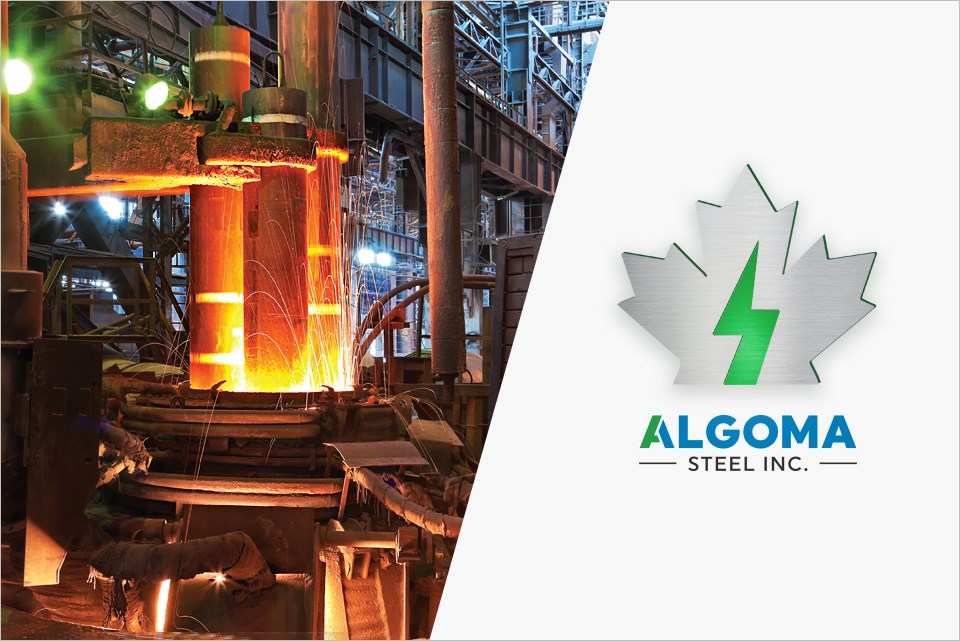Algoma Steel’s Board of Directors has authorized the Company to construct two state-of-the-art Electric Arc Furnaces (EAF), which when fully operational will replace Algoma’s current steelmaking operations and eliminate current coke and iron production.
This is a significant, exciting time for our company and for Sault Ste. Marie. Algoma’s EAF transformation will be a $700 million project - as significant as our investment in the Direct Strip Production Complex (DSPC) 25 years ago. The switch to a low-carbon manufacturing process is expected to dramatically shrink Algoma’s environmental footprint, reducing greenhouse gas emissions by 70%. When paired with Ontario’s clean power supply, Algoma will join the leading producers of green steel in North America.
The economics support the investment in green steel. The project will create a more scalable operating model, cost structure, and with vacuum degassing, an expanded plate product offering. It is projected to significantly reduce Algoma’s carbon taxes, and the increase in liquid steel capacity provides a platform for growth into new markets and new products.
Steel is an enabler – from wind turbines to electric cars, steel is an integral part of nearly every net zero solution. This transition positions Algoma to meet the growing demand for green steel, and confers a corporate purpose that elevates Algoma’s participation in Canada’s low-carbon economy.
So what does this transformation - this new purpose - mean for our community, our country, our customers and our people?
This is a win for all stakeholders. Algoma has engaged with employees, union representatives, community and educational leaders, suppliers, government and customers regarding this transformation.
Algoma’s EAF project is expected to provide the following benefits:
- A modernized workplace offering skills development and succession opportunities for today’s employees;
- More apprenticeships, co-op placements, and high-skill career opportunities for our youth;
- At least 500 new construction jobs in the region; and
- New supply-chain opportunities for the region, including in transportation, power generation and automation.
The EAF investment addresses many of the challenges of an integrated producer, and provides an opportunity for improved profitability, secure pensions, and greater profit sharing opportunities for our employees.
As our No. 7 blast furnace approaches the end of its current campaign, the time is right to make this transition. Remaining an integrated blast furnace producer would:
- Reduce our competitiveness in a North American market dominated by EAF producers;
- Expose us to increasing carbon taxes and other regulatory compliance costs;
- Require substantial capital investment without providing the opportunity to grow; and
- Present a continuing challenge of replacing retiring skilled trades.
The transformation to electric arc steelmaking will help to secure good, high skilled, sustainable jobs for generations of Algoma employees.
Change is not new to Algoma Steel. Like Algoma’s recently announced support for Sault College’s Mechatronics program, we are future focused. That includes building pathways for youth in science and technology subjects, and skilled trades – and providing them with exciting and meaningful career options in advanced manufacturing.
Back in September of 2020, we started a dialogue with our employees and their union representatives about the potential to transition to electric arc steelmaking. Conversations on the shop floor, in lunch rooms, and (as COVID protocols required) in virtual sessions, allowed employees to ask questions and offer suggestions. The feedback from over 350 meetings was tracked and shared and the dialogue continues.
Algoma’s collective agreements have specific pathways to implement major technological change such as the EAF – to protect the business and ensure the fair treatment of all affected workers. Management is engaged with union leadership through the Joint Steering Committee to build a plan to transition the operation and the workforce to the new manufacturing process. The meetings are ongoing with representatives from USW District 6 and Local 2724 actively participating.
The technologies required to complete the EAF transformation are world class, and we have the partnerships in place to implement the project on our timelines. With the ability to use 100% scrap, Algoma has established a joint venture with Triple M Metal to source prime ferrous scrap and other iron units to meet our future needs.
It will take about 30 months to construct and commission an EAF, allowing time to transition the workforce which will include training and targeted hiring to offset the large number of projected employee retirements, as well as the transitional period when Algoma will operate a hybrid model of blast furnace and electric arc. Algoma remains committed to the principles of fairness, protecting seniority for employees in transitioning departments, and providing skills training for employees to fill new roles.
Change is fundamentally about people. Algoma’s transition to electric arc steelmaking offers the people of Algoma and Sault Ste. Marie the opportunity to be part of the solution to our climate change challenge. And beyond that, it offers Algoma and Sault Ste. Marie so much potential, for this generation and the next.

